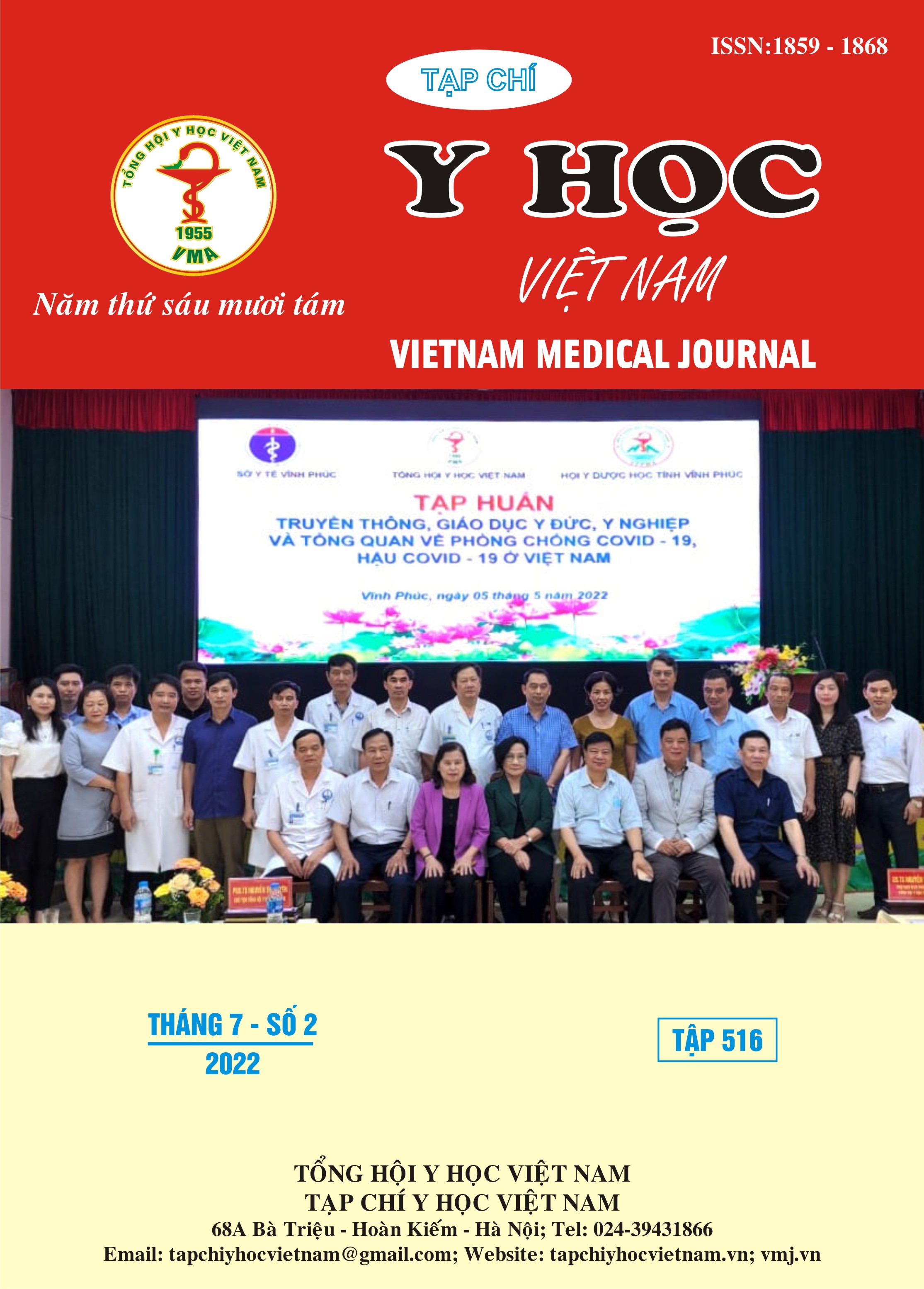MICRONUTRIENT DEFICIENCIES IN CHILDREN AGED FROM 6 MONTHS TO 5 YEARS OLD WITH STUNTING
Main Article Content
Abstract
Objective: To evaluate the relationship between stunting and micronutrient deficiencies in children aged from 6 months to 5 years old at the Nutrition Clinic, National Children's Hospital. Subjects and methods: The study was established with 234 children from 6 months to 5 years old at the Nutrition Clinic, National Children's Hospital, from September 2020 to September 2021 by a cross-sectional prospective study. Results: Children with stunting accounted for the highest rate (25.6%). Children with stunting have an increased risk of iron deficiency, zinc deficiency and vitamin D deficiency with 1.5 times, 1.5 times and 1.9 times, respectively, the difference is statistically significant with p < 0.05. There was no correlation between Z-score (height/age) and iron concentration (r=0.01; p=0.92). Z-score (height/age) was weakly correlated with serum ferritin concentration (r=0.17; p=0.01), weakly correlated with vitamin D concentration (r=0.21; p=0.001), average correlation with zinc concentration (r=0.45; p<0.00). Conclusion: Children with stunting, especially severe ones, have an increased risk of micronutrient deficiencies (including iron, zinc and vitamin D) than children without stunting.
Article Details
Keywords
micronutrients, children, malnutrition, stunting
References
2. World Health Organization. Anaemia in Women and Children: WHO Global Anaemia Estimates, 2021 Edition. World Health Organization; Geneva, Switzerland: 2021. Available online: https://www.who.int/data/gho/data/themes/topics/anaemia_in_women_and_children.
3. Viện Dinh dưỡng. Điều tra về Vi chất dinh dưỡng năm 2014 - 2015. Viện Dinh dưỡng Quốc gia. 2015.
4. Kenneth H, Brown K, Wessells R (2012). Estimating the global prevalence of Zinc deficiency: Results based on Zinc availability in national food supplies and the prevalence of stunting. PLoS One, 7(11), e50568.
5. Hess S.Y, Lönnerdal B, Hotz C et al (2009). Recent advances in knowledge of zinc nutrition and human health. Food Nutr Bull, 30(1), 5-11.
6. Regan L and Bailey R.L (2015). Like poverty, undernutrition and micronutritient deficiencies often occur as past of an intergenerational cycle. Ann Nutr Metab, 2, 22-23.
7. Prendergast A.J, Humphrey J.H (2014). The stunting syndrome in developing countries. Paediatrics and international child health, 34 (4), 250-259.
8. Toko N.E, Sumba O.P, Daud I.I et al (2016). Maternal Vitamin D Status and Adverse Birth Outcomes in Children from Rural Western Kenya. Nutrients, 8(12), 794.


